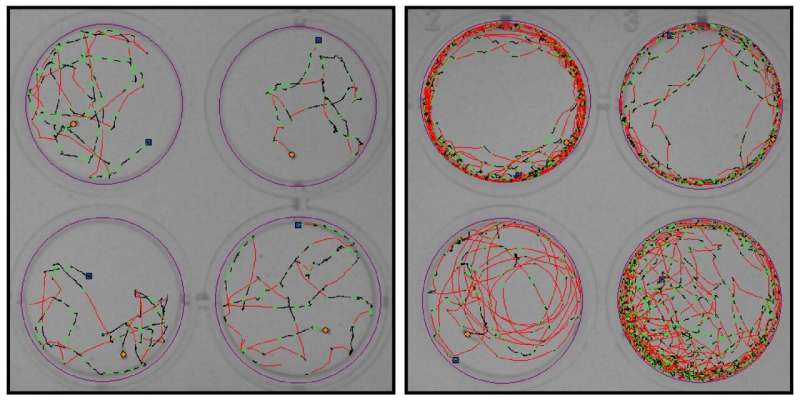Cholesterol accumulation contributes to genetic movement disorder

A research team at the Greenwood Genetic Center (GGC) has identified the mechanism that causes movement disorders in patients with mutations in the NUS1 gene. Using both cellular and model organism studies, cholesterol accumulation was found to contribute to the symptoms of seizures, ataxia, and movement abnormalities. This breakthrough study on NUS1, a gene that has also been potentially linked to Parkinson's Disease, is reported in the current issue of Genetics in Medicine, the Journal of the American College of Medical Genetics and Genomics.
Chloe Murphy, 15, of Bluffton, SC began experiencing tremors at age three. Through the years she has also experienced seizures, atypical eye movements, learning delays, and balance issues. Initial genetic tests were normal until, at 12 years of age, whole exome sequencing identified a de novo variant in NUS1.
"Chloe's specific NUS1 variant had never been reported before, so we initiated functional studies using fibroblasts, and developed a zebrafish model to mimic her genetic variant," said Heather Flanagan-Steet, Ph.D., Director of Functional Studies and Director of the Hazel and Bill Allin Aquaculture Facility at GGC. Flanagan-Steet and her team also studied two other patients with NUS1 variants and similar clinical findings.
Chloe's zebrafish 'avatar' displayed aberrant motility and swimming patterns. Cellular studies also identified increased lysosomal cholesterol storage, both in the skin cells of the three patients as well as in the cells of the zebrafish avatar.
"These studies confirmed the pathogenicity of this variant, which provided a long-awaited answer for her family, and also gave us the opportunity to better understand this rare diagnosis and consider potential treatments," said Rich Steet, Ph.D., Director of Research at GGC.
"The excess cholesterol storage in both the human and zebrafish cells, suggested that treatments targeting cholesterol accumulation could be therapeutic," said Flanagan-Steet. "When we treated the affected zebrafish with the drug, 2-hydroxypropyl-beta-cyclodextrin, they showed reduced accumulation of cholesterol and significant improvement in swimming behaviors, suggesting that the cholesterol accumulation is at least partially responsible for the motility phenotypes."
The Murphy family has found hope through their research participation.
"Our journey so far has been to find the 'why.' We felt like once we could determine this, we could better understand what could help Chloe," said her mother, Jessica. "Our hope now is that these breakthroughs with NUS1 will lead to a solution to improve her health."
More information: Seok-Ho Yu et al, Lysosomal cholesterol accumulation contributes to the movement phenotypes associated with NUS1 haploinsufficiency, Genetics in Medicine (2021). DOI: 10.1038/s41436-021-01137-6




















